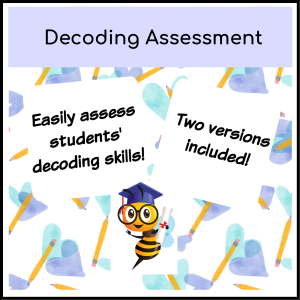Middle School Graphing and Data Goals

Browse CCS-aligned IEP goals and objectives for understanding and interpreting data.
Middle School Data and Graphing Goals
These mathematics goals for students in 6th to 8th grade focus on graphing on a coordinate plane. Not seeing the grade level or skill you need? Check out our elementary school, middle school, and high school graphing goals.
- 6th Grade
- 7th Grade
- 8th Grade
- Solve real-world and mathematical problems by graphing points in all four quadrants of the coordinate plane. Include use of coordinates and absolute value to find distances between points with the same first coordinate or the same second coordinate. CCSS.MATH.CONTENT.6.NS.C.8
- There are a lot of great resources for assessing a student’s ability to identify ordered pairs and to plot points on a coordinate plane. This pdf assesses their ability to plot point. This site has a few problems that go the opposite direction–having the student give ordered pairs for points. Note that neither gets into absolute value or solving real-world problems. This site has worksheets that are a bit more challenging for a baseline assessment.
Looking for easy-to-use assessment resources or support with turning assessments into goals and present levels? Check out the IEP Success Kit in the store!
Liam is proficient at graphing ordered pairs in the first quadrant of a coordinate plane provided that x and y are labelled on the ordered pairs and on the graph. He needs support to graph on the other three quadrants, as well as to label ordered pairs and when the x and y labels are missing for the ordered pairs or on the graph.
For more baseline ideas, check out the IEP Success Kit!
- Given five ordered pairs, Name will solve real-world and mathematical problems by graphing points in all four quadrants of the coordinate plane with 80% accuracy as measured by teacher records and observations. CCSS.MATH.CONTENT.6.NS.C.8
- Make it easier: Change it to just the first quadrant or specify ordered pairs with x and y labelled.
- Make it harder: Add “and calculate the distances between points with the same first coordinate or the same second coordinate.”
- Recognize and represent proportional relationships between quantities CCSS.Math.Content.7.RP.A.2.
- This packet from Sawyer Middle School is perfect for assessing this goal!
Looking for easy-to-use assessment resources or support with turning assessments into goals and present levels? Check out the IEP Success Kit in the store!
Given a table with x and y labelled, Sung can create a graph of a proportional relationship and label the axes correctly. Sung needs significant support to identify whether the relationship is proportionate and to identify the unit rate.
For more baseline ideas, check out the IEP Success Kit!
- Given a table of x and y values, Name will recognize and represent proportional relationships between quantities, by graphing each point on a coordinate plane and identifying whether the relationship is proportional with 80% accuracy as measured by teacher records and observations CCSS.Math.Content.7.RP.A.2.
- Make it easier: and a visual reminder of how to identify a proportionate relationship
- Make it harder: Add “and use the graph to identify the unit rate”
- Graph proportional relationships, interpreting the unit rate as the slope of the graph. Compare two different proportional relationships represented in different ways. For example, compare a distance-time graph to a distance-time equation to determine which of two moving objects has greater speed. CCSS.MATH.CONTENT.8.EE.B.5
- This packet from Sawyer Middle School is focused on 7th grade graphing, but is helpful for students who are struggling with graphing or proportional relationship. These textbook pages, if you go near the end, are good for assessing the standard for more advanced students.
Looking for easy-to-use assessment resources or support with turning assessments into goals and present levels? Check out the IEP Success Kit in the store!
Given a table of x and y values, Diana can graph them on a coordinate plane and label the axes based on the table categories. She needs teacher support to answer questions about what is shown in the graph, including about the unit rate, and to compare two different proportionate relationships.
For more baseline ideas, check out the IEP Success Kit!
- Given tables of x and y values, Name will graph proportional relationships, interpreting the unit rate as the slope of the graph, as demonstrated by graphing the points and finding the unit rate with 80% accuracy on two of three trials as measured by teacher records and observations CCSS.MATH.CONTENT.8.EE.B.5
- Make it easier: Focus just on graphing the table
- Make it harder: Have the student create graphs for two different tables and add “Compare two different proportional relationships,”

Elementary School IEP Writing Success Kit
$49.98
High School IEP Goal Book & Creator
$29.99
Elementary School IEP Goal Book & Creator
$29.99
Middle School IEP Goal Book & Creator
$29.99
Decoding Assessment for IEPs & Progress Monitoring
$1.99
Socio-Emotional Goal Bank
$14.99








